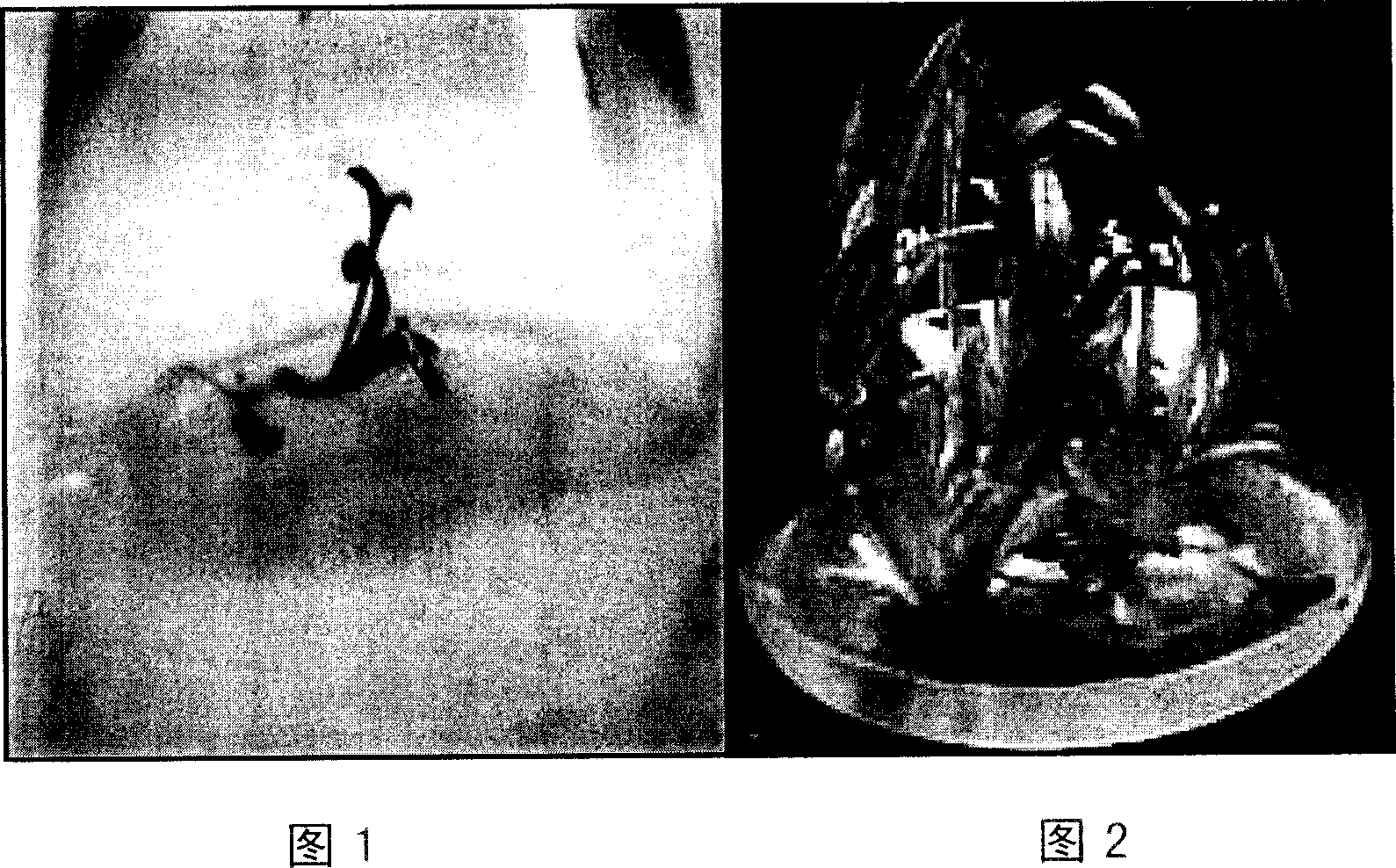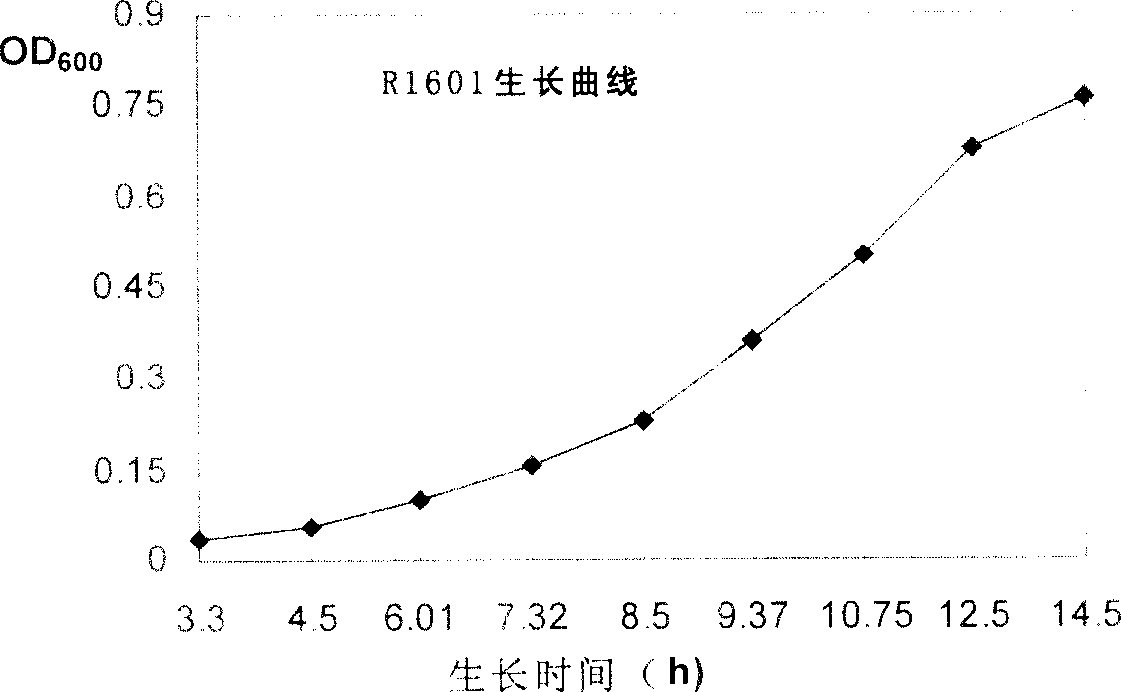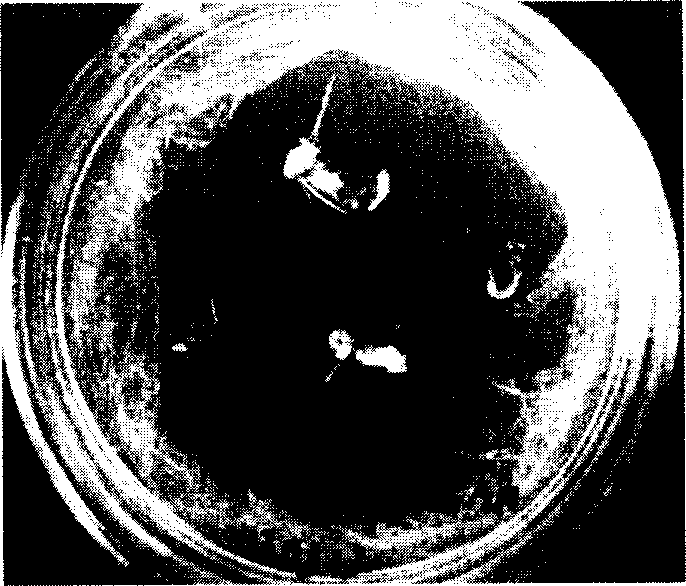Method for culturing xinjiang saussurea involucrata fuzzy root and regenerated seeding and method for producing lilac saponin
A cultivation method, the technology of syringin, applied in the field of plant biotechnology engineering, to achieve the effect of good quality, high yield and rapid growth
- Summary
- Abstract
- Description
- Claims
- Application Information
AI Technical Summary
Problems solved by technology
Method used
Image
Examples
Embodiment 1
[0066] 1. Establish a high-frequency regeneration system for Xinjiang snow lotus
[0067] 1.1. Seed disinfection treatment
[0068] Source of seeds: the dried Xinjiang snow lotus (S. Involucrata) picked in Bogda Peak, Tianshan Mountain, Xinjiang in 2002, and the seeds were stripped from the inflorescence.
[0069] Cleaning: Choose healthy, full-bodied, mildew-free seeds, rinse them with tap water 4 times, soak them overnight at room temperature, and rinse them with running water for 1 hour.
[0070] Disinfection: Soak in 70% ethanol for 30s, act on 0.1% mercuric chloride for 20-25min, wash with sterile water 4-6 times.
[0071] Seed germination: hormone-free MS medium, 3% sucrose, 0.8% agar, 25°C, light intensity 2000lux, continuous light, and seeds germinated after 3 days. (Figure 1 germination and seedling of Xinjiang snow lotus)
[0072] 1.2. Inducing cotyledons to produce clustered seedlings
[0073] Explant treatment: select the green seedlings with cotyledon unfolded...
Embodiment 2
[0081] Embodiment 2: establish the transformation system of Snow Lotus in Xinjiang
[0082] 2.1. Transformation preparation experiment 1-determining the strain of Agrobacterium rhizogenes:
[0083] Determination of Agrobacterium strains: The infection effect of Agrobacterium rhizogenes LBA9402, R1601, R1000, and A4 was tested with tobacco, and it was found that R1601 was the most toxic, and the tobacco leaves infected by it took the shortest time to root, and the induced The hairy root has typical hairy root morphological characteristics (Kanamycin 100mg / L, slender, many hairs, weak gravitropism, growth along the bottle wall, oblique secondary root), and there are plants of the same family Artemisia annua, Saussurea jellyfish is induced by R1601 to obtain hairy roots at a rate of 90%. Therefore, the present invention prefers Agrobacterium rhizogenes R1601 to infect Xinjiang Saussurea jellyfish.
[0084] 2.2. Transformation preparation experiment 2--determining Km screening pr...
Embodiment 3
[0104] Example 3: Screening of Hairy Roots
[0105] The 1.0-2.5 cm long root tip of the completely sterilized hairy root was cut and placed on the selection medium 1 / 2MS (3% sucrose+300mg / l Cef+100mg / l Km) and cultured in low light. After 10-12 days, the 1.0-2.5 cm root tip of the Km-resistant root system was cut for liquid culture.
PUM
 Login to View More
Login to View More Abstract
Description
Claims
Application Information
 Login to View More
Login to View More - R&D
- Intellectual Property
- Life Sciences
- Materials
- Tech Scout
- Unparalleled Data Quality
- Higher Quality Content
- 60% Fewer Hallucinations
Browse by: Latest US Patents, China's latest patents, Technical Efficacy Thesaurus, Application Domain, Technology Topic, Popular Technical Reports.
© 2025 PatSnap. All rights reserved.Legal|Privacy policy|Modern Slavery Act Transparency Statement|Sitemap|About US| Contact US: help@patsnap.com



